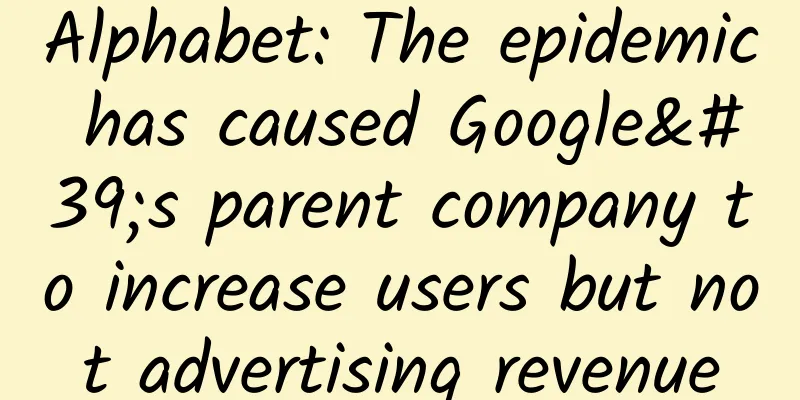Alphabet: The epidemic has caused Google's parent company to increase users but not advertising revenue

|
Impact of COVID-19 on product usage
Impact of COVID-19 on advertising revenue Overall, the company's advertising revenue in March was affected by the epidemic, but its non-advertising business was not affected. The advertising business grew strongly in the first two months of 1Q, but fell significantly in March. Affected by the epidemic, the company delayed the launch of advertising product functions, giving priority to supporting customers and merchants, and announced last week that merchants can use Google Shopping to display products for free. The company is confident in revenue recovery: because search is the best way to ROI, it is easy to pause and start; the company's revenue is increasingly diversified, such as cloud computing, which is relatively unaffected by the epidemic. G suite customers exceed 6 million. There are 2.5 billion monthly active Play devices worldwide. Financial Performance: At the company level, total revenue was $41.2 billion, up 13% year-on-year, and up 15% year-on-year after removing the impact of exchange rates. Growth was driven by search, YouTube, and cloud computing. Advertising revenue was negatively affected by the COVID-19 pandemic. Total costs, including TAC, were $19 billion, up 19% year-over-year, and other costs were $11.5 billion, up 26% year-over-year, mainly affected by Google's cost growth, including data center and other operating expenses and content expense amortization. Operating expenses were $14.2 billion, with headcount growth being the largest driver of growth in R&D and marketing expenses. Operating profit was $8 billion, down 4% year-on-year. Excluding the impact of the EU fine, operating profit margin was 19%. Net income was $6.8 billion, or $9.87 per share. Capital expenditures were $6 billion, operating cash flow was $11.5 billion, free cash flow was $5.4 billion, and cash and marketable securities were $117 billion. Google's business revenue was $41 billion, up 14% year-on-year. Google search and other revenue was $24.5 billion, up 9% year-on-year, reflecting strong growth in the first two months and a year-on-year decline of more than ten percentage points in March. Despite the increase in user searches, commercial search interest has declined, which in turn has affected search advertising revenue. YouTube's advertising revenue was $4 billion, up 33% year-over-year. In the first two months, both brand and performance advertising revenue grew strongly. Brand advertising began to come under pressure in mid-March, while performance advertising remained strong throughout the quarter. Affiliate advertising revenue was $5.2 billion, up 4% year-over-year, with healthy year-over-year growth in the first two months and a low double-digit decrease in March. Google Cloud revenue was $2.8 billion, up 52% year-over-year. GCP grew significantly, G Suite remained strong, and the number of seats and per capita revenue contribution continued to grow. Google's other revenue was US$4.4 billion, up 23% year-on-year, mainly from Youtube's non-advertising revenue (membership growth) and Play. TAC was $7.5 billion, accounting for 22% of total advertising revenue, up 9% year-over-year. TAC's share of advertising revenue has slightly decreased year-over-year, reflecting the growth of Google's on-site advertising. Google's business operating profit was $9.3 billion, up 1% year-on-year, with an operating profit margin of 23%. Other Bets business had revenue of $135 million, mainly from Fiber and Verily, and an operating loss of $1.1 billion. |
>>: In addition to cleanliness, giving the elderly a bath has unexpected benefits!
Recommend
Attack of the Fatty
This is the 3182nd article of Da Yi Xiao Hu As th...
What is the cause of bleeding during pregnancy?
For pregnant women, the first three months of pre...
The dangers and side effects of female intrauterine device
Female IUD is a commonly used contraceptive metho...
What is the normal hcg value for early pregnancy?
The hcg value is a manifestation of abnormality i...
How to return to the desktop on an OPPO phone? How to cast the screen of an OPPO phone to a TV
OPPO phones have many functions to meet users'...
What causes yellow discharge and a foul odor?
Women often have vaginal discharge, and most of t...
Pictures of cesarean section recovery
During childbirth, women may choose a cesarean se...
Can pregnant women with high blood sugar eat oranges?
In fact, many pregnant women are prone to gestati...
Why are people with strong working ability not promoted? Under what circumstances will leaders promote employees?
There are many people in the workplace who are no...
Why is my period not over after 10 days?
Menstruation is a blessing for women every month....
When does a girl's voice change?
As girls grow older, they will gradually enter pu...
Can dumpling wrappers be used to make steamed buns? What kind of flour is used to make dumplings?
Dumplings are a traditional Chinese food. They ar...
Is the tenth day of menstruation a safe period?
As we all know, having sex during the safe period...
What to do if a pregnant woman has thick legs and a big butt
Many women notice that their legs become wider du...
Behind the successful "heart transplant" of a one-year-old child: What is the true status of global transplant research?
Heart transplantation has always been considered ...









